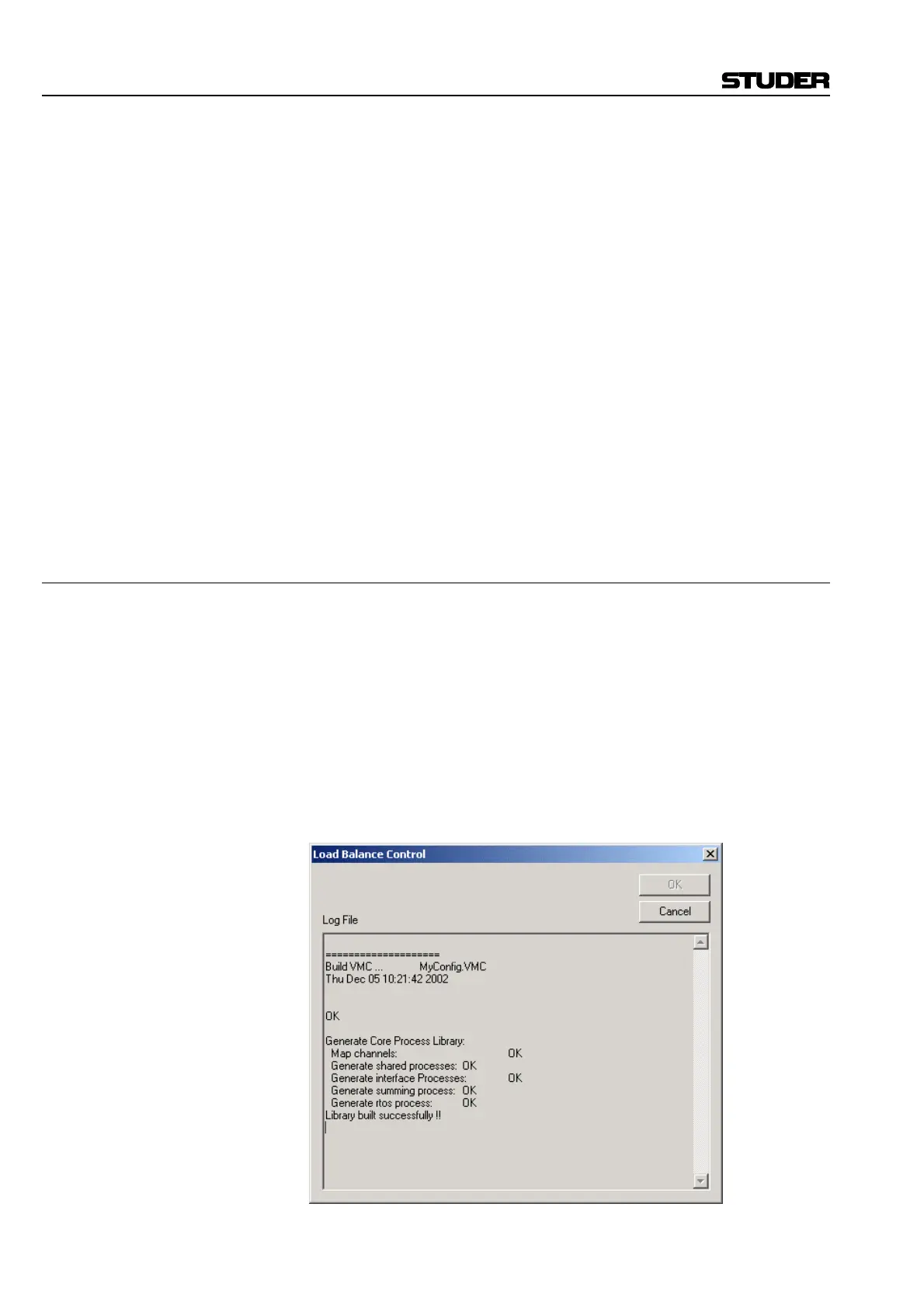D950/Vista Digital Mixing System
7-20 ConfigTool SW V3.3 Date printed: 05.08.03
When you edit a configuration and see that it requires more boards than
your existing core has, there are three possibilities to continue.
Generate Core and Check Again To get to the real number of boards, the full Generate Core process has to
be done first, as will be explained in the next chapter. Once this is fin-
ished, it may happen that the requirements are less then estimated, and that
your newly edited configuration could fit on the existing core.
F Tip It is always recommended to run the Generate process before deciding
whether a desired configuration will fit on a given DSP core.
Reduce the Requirements If you do not have enough installed DSP power, you can either reduce your
configuration slightly, by reducing the number of channels or by removing
some Dynamics or EQs you do not really need, or by reducing the number
of I/Os, until the configuration matches your actual board number.
Add More Power The other way is, of course, to plug in the additional required number of
PE or PEAES cards into the DSP rack and load your new configuration.
You can even do this with power on. You may need to add some I/O wir-
ing on the back of the DSP rack if you are expanding the number of physi-
cal I/Os.
7.3.3 Generate the Core File
To generate the core file for your new configuration, simply click on the
“Generate / All” menu item. This starts an automatic process which will
end up with a core file being saved in the same folder as the *.vmc file.
A fairly complicated procedure called Load Balancing will try to compress
all the required components of the new configuration into as few DSP
boards as possible, and, at the same time, try to distribute the workload
evenly across all necessary DSP boards.
You can follow what is happening on the screen. Most of the information
shown on screen will also be stored into a LOG file for later viewing.
Build VMC and Processes The Load Balancer first generates the VMC structure and then checks the
channels, shared processes, buses, and builds a DSP library.
